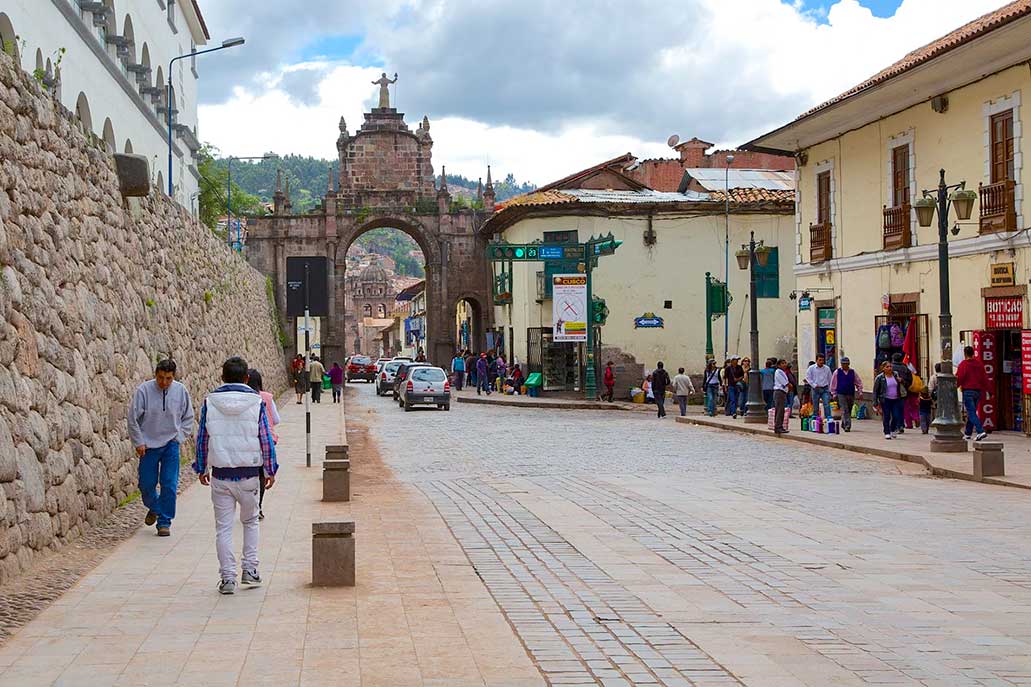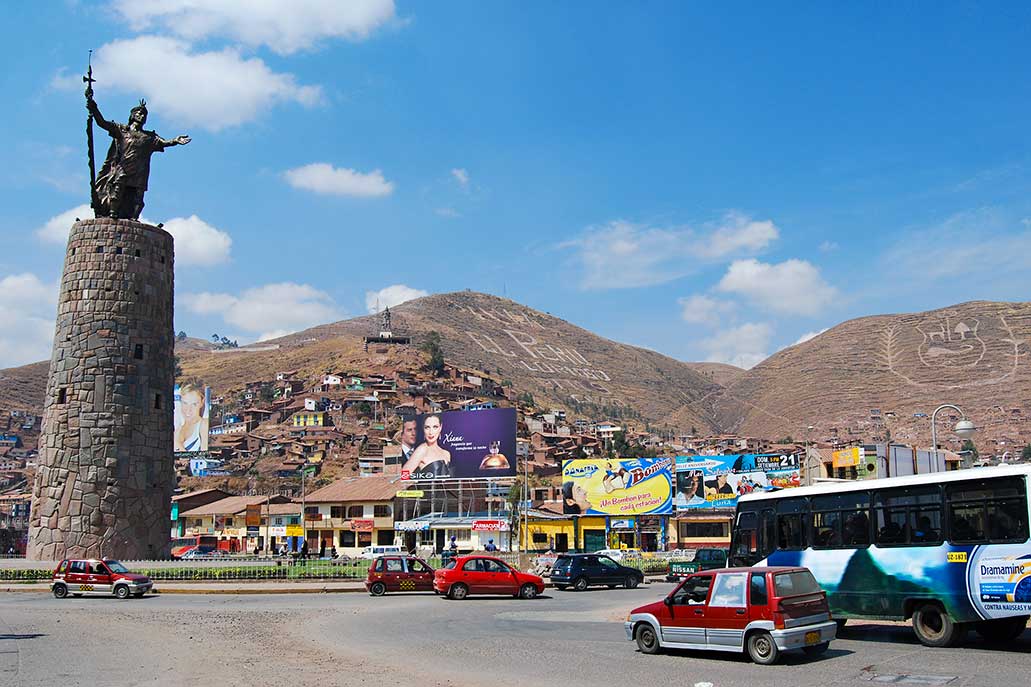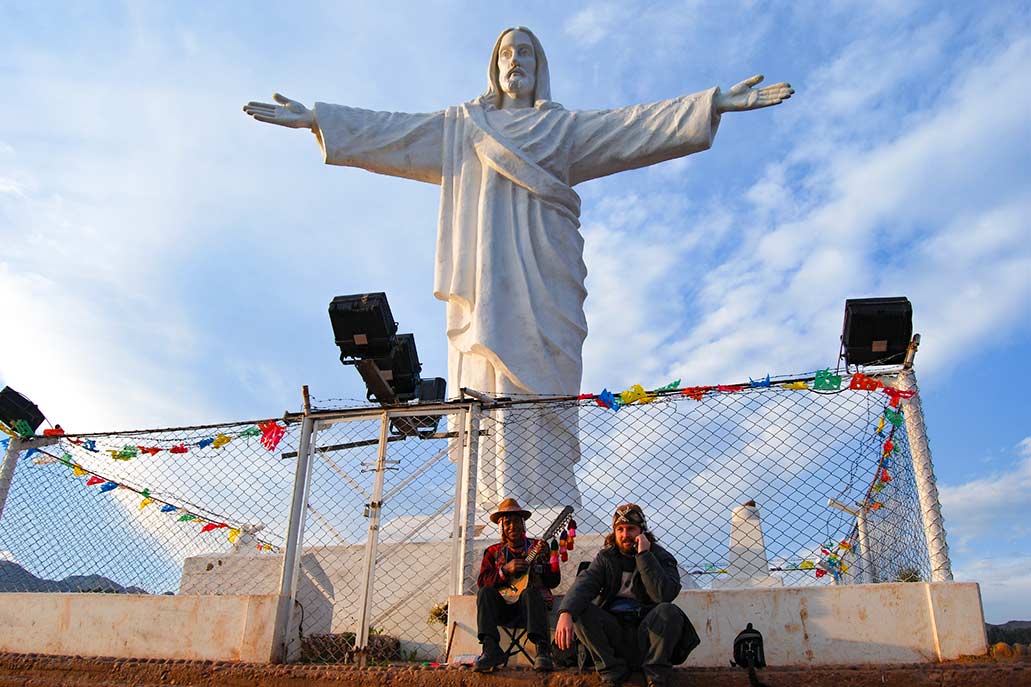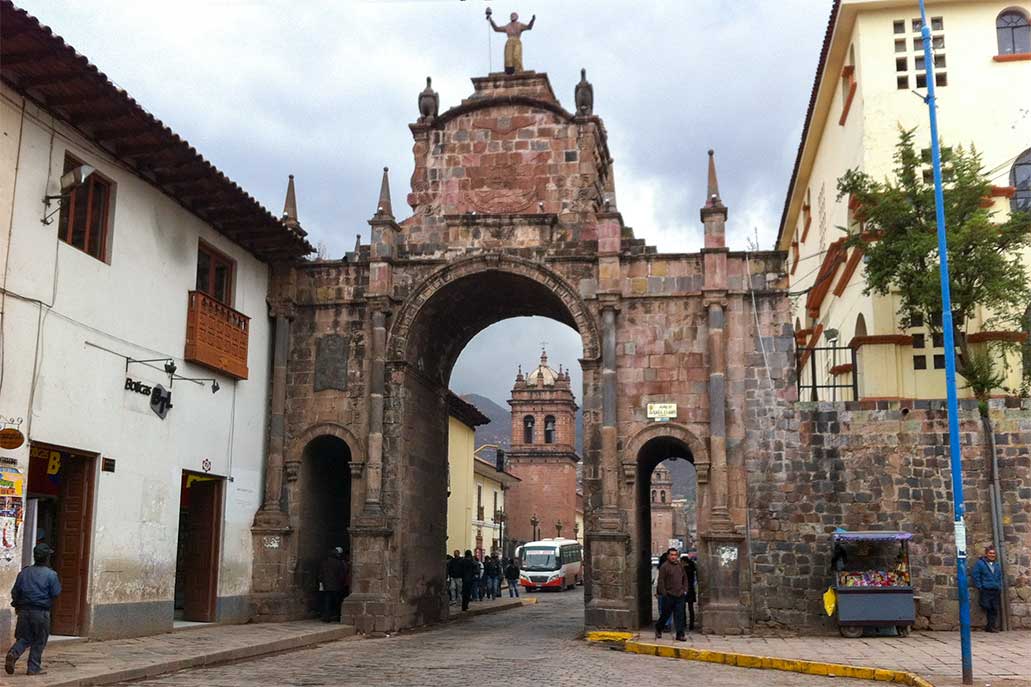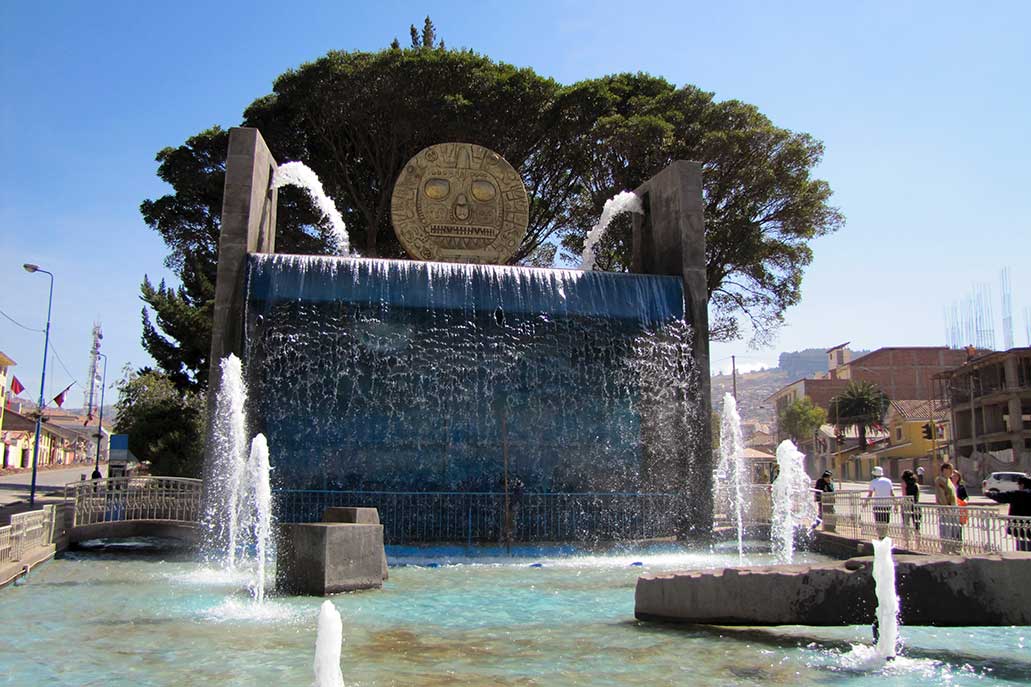The most representative monuments of Cusco
Throughout the history of Cusco, some sculptures were built and made. These sculptures can be found in different parts of Cusco. These sculptures and constructions each have a particular history and at the same time, they are important decorative points of the city. Many of the monuments serve to highlight the ancient civilizations that lived in Cusco territory. In this blog, we will know details of how to get to visit them, if they have an entrance fee or what other activities near them can be done. Let’s start.
Pachacutec Monument
The monument of Pachacutec was built in 1992 and was remodeled and restored in 2011. The author of the sculpture was the Cusquenian artist Fausto Espinoza. It has a total height of 34 meters. It is composed of two bodies. The first of them is a cylindrical stone platform with 22 meters high.
On this first stone structure you can find the sculpture of the Inca Pachacutec, this sculpture has a height of 11 and a half meters. Its main material is bronze. It was assembled once the stone structure was placed. In the case of the platform, the structure emulates the shape of the stones that the Incas used for their constructions.
What does it represent?
The sculpture makes direct reference to Pachacutec, also known during the Inca period as “the transformer of the earth”, for the different reforms he carried out. In addition to consolidating the Inca domain along the valleys surrounding Cusco.
Pachacutec was also a great visionary and conqueror who lived to meet his grandchildren. According to some chronicles, he was the one who saw with good eyes the skills of his grandson, who would be called Huayna Capac, at the time of being crowned as Inca.
How to visit the monument of Pachacutec?
This monument is located near the Historic Center of Cusco. This place is called Óvalo Pachacútec and it is precisely at the end of El Sol Avenue. One way to get there is following this avenue from near the Plaza de Armas.
The time it can take to get there on foot is only 25 minutes, or even less. While if you take transportation, you can get there in 5 to 10 minutes, depending on the traffic conditions.
Costs and more information
The monument can be visited inside and outside. In the case of the outside visit there is no cost. Only the cost of transportation and some snacks if necessary. However, to enter inside the structure, where there is a small museum, it is required the payment of 2 PEN, in the case of cusqueños. For the general public it is likely that the price will have some modifications.
In this museum, you can find a lot of information about the Inca past, as well as the changes that the whole region went through since the arrival of the first human beings. On the other hand, you can also learn about the battles led by Pachacutec and part of his life is also exposed.
White Christ
It is a monument that symbolically serves as a protector of all of Cusco. It is located very close to Sacsayhuaman. So it can also be seen from some streets of Cusco. The sculpture of the white Christ, is shown with his arms as one who welcomes.
The sculpture of the White Christ of Cusco has a height of 8 meters. This without counting the altar where it is located. This place is also known as a viewpoint. It is quite popular among young people and why not for those people looking for a romantic evening or afternoon.
The artist and sculptor from Cusco, Francisco de Olazo, was in charge of carving the figure. Among the materials used, the presence of clay and cedar stands out, likewise, granite was also used. This is the material that can be seen most in the sculpture.
What does it represent?
The sculpture makes a clear reference to the Christian tradition. It is for this reason that the figure stands out not only for its beauty but also for the cross shape of the arms (open) that it has. It also symbolizes the protection of the people of Cusco. It also represents peace and blessing for the people of Cusco.
How to visit the monument of Cristo Blanco?
Knowing more about this place is possible thanks to it is very easy to get there. It is very close to Sacsayhuaman. So there is the possibility of arriving, on foot, by cab or by public transport. Of course you can also arrive with a private vehicle, precisely there you can find a small parking lot.
If you decide to do the route on foot, it can take about 40 minutes from the Plaza de Armas in Cusco. But during the walk you can observe the city from different angles. In addition, it is a good alternative to distract yourself or spend time with the family on a weekend.
Costs and more information
There is no cost to visit the White Christ. In addition, it can be visited by people of any age. An option for people who do not want to do the walk, is the private tours or the mirabus.
Once in this place, you can complete your visit with a tour of Sacsayhuaman. Also, if possible and depending on the means of transportation you have used, you can visit more places like Qenqo, Tambomachay and Pucapucara.
If you are making the tour of these precincts, you can not miss the opportunity to visit the churches of Cusco. There you can find beautiful buildings that are cultural heritage, plus some churches that also have their museums, where you can appreciate the art of the famous Cusco school. We encourage you to visit them.
Arch of Santa Clara
The Arch of Santa Clara is one of the monuments that have accompanied the city of Cusco since the time of the republic. There are records that it was ordered to be built by the Bolivian General Andres de Santa Cruz. The intention was to commemorate the union Peru – Bolivia during the year 1835.
This was one of the gifts sent as a way of formalizing the union between the two countries. This union motivated Chile to attack both countries, but that is another story. The arch has two parts or divisions, the first part where the two small arches and the Ionic columns are presented.
Above, the second part begins, where the national coats of arms of Peru and Bolivia can be seen. This part of the construction starts at the end of the curvature of the largest arch. Precisely there, you can find the small altar where you can see the figure of the Motherland. One of the first remodeling that was done was in 1932.
What does it represent?
As we have already mentioned, it represents the alliance between Peru and Bolivia. Expressed as a triumphal arch. Likewise and after several years it was granted another commemorative value for those who initiated the first libertarian movement, which was led by Tupac Amaru or Jose Gabriel Condorcanqui.
How to visit the Arco de Santa Clara monument?
It is quite easy to get to know and you have probably already passed by it without noticing it. It is in a busy area and because of the large amount of vehicles that generate congestion, it goes unnoticed. It is located on one of the corners of Plaza San Francisco, precisely following Santa Clara Street. Santa Clara Street, at the same time, represented the first step towards the Contisuyo.
Costs and more information
Getting to this place is quite simple and does not require much effort or payment. But you have to walk for about 10 minutes from the Plaza de Armas of Cusco. A simpler reference to get there can be the direction of the Colegio Ciencias de Cusco or the road to the San Pedro Market.
Orellana or Pumaqchupan Park
Both the Orellana Park and the Paqcha Pumaqchupan are located on the Sol Avenue. Both are also very close to the Plaza de Armas. In the case of the Paqcha, it consists of a construction of 7 meters high and 10 meters wide.
The fall of the water starts from the top. The fall is slow and contrasts perfectly with the light blue background that lets you see the water as a mantle that covers the whole place. Likewise, two water outlets can be found on the sides of the construction.
Finally, the Paqcha of Pumaqchupan has the representation of the Sun of Echenique at the top of the entire enclosure. It is really beautiful to see both day and night. Behind all this structure is the Plaza Orellana, there on the wall behind the paqcha is a beautiful mural.
This mural was made by the artist Fernando Olivera, which highlights the figure of the puma, the sun, the chacana, coca leaves and other representations that symbolize the Andean and Incan cosmovision. As well as the religious value of the same ones that to this day continue being very venerated.
What does it represent?
Both the mural and the paqcha actively represent the Andean cosmovision. Water was as vital as the rest of the products that could be obtained from agriculture. In the past, the first settlers also had important constructions dedicated to water.
Likewise, this whole place represents the respect and admiration for everything that represented the Inca culture in the past. Or more precisely the Andean culture and its particular way of understanding the world with total respect for life and nature.
How to visit the monument this place?
As we saw the Orellana park and the Paqcha Pumaqchupan are very close to the Avenida el Sol. If we leave on foot from the Plaza de Armas of Cusco can be reached by following the Avenida el Sol in only 10 to 15 minutes. In case you do it by cab or private transport, the time will decrease considerably.
Costs and more information
Like the other places, visiting the Orellana Park and the Paqcha Pumaqchupan, do not have a cost, they are completely free. This place, in addition, can be visited both during the day and at night. In both cases it acquires a particular beauty and very colorful. So you can not miss a photograph in each of these places.
